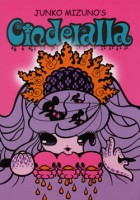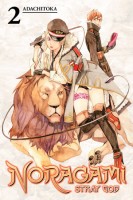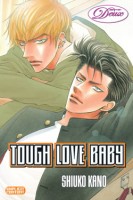My News and Reviews
Last week was a two-review week here at Experiments in Manga. I read and loved Ellery Prime’s Gauntlet, the first novel to have both started and finished in Sparkler Monthly. I’m not sure the review really does the book justice—the story is difficult to write about without spoiling it—but Gauntlet is really good stuff. Ever since reading the novel, I haven’t been able to get it out of my head. (Coincidentally, both Gauntlet and Jen Lee Quick’s marvelous comic Off*Beat are currently on sale!) The second review posted last week was of Setona Mizushiro’s After School Nightmare, Volume 2. So far, the series remains a disconcerting but compelling work. The manga has a lot of dark, psychological drama, which I tend to enjoy, although that can also make it a difficult read from time to time. Many of the characters simply aren’t very nice people. The review is a part of my monthly horror manga review project; next month it will be Mushishi‘s turn again.
On to other interesting reading and news from elsewhere online! The Young Adult Library Services Association has released its 2015 Great Graphic Novels for Teens. The annual list is always worth a look. The manga for 2015 include All You Need is Kill, My Little Monster, My Love Story, Seraph of the End, Summer Wars, Voice Over! Seiyu Academy, Wolf Children: Ame & Yuki (the only manga included on the top ten list), and World Trigger. Over at Organization Anti-Social Geniuses, Laura from Heart of Manga provides The 2015 Shoujo Manga Forecast, a comprehensive overview of the shoujo manga that has so far been announced for this year, listed by publisher and expected release date. And on the Vertical Tumblr there is a post Reviewing the “Best Manga of 2011” from a licensing angle which I found to be particularly fascinating. Speaking of Vertical, three new licenses!—Seraph of the End light novels, Ninja Slayer manga, and KizuMonogatari.
Quick Takes
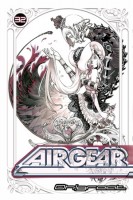 Air Gear, Volume 32 by Oh!Great. This is actually the first volume of Air Gear that I’ve ever read, and the only other manga by Oh!Great that I’ve been exposed to is the very beginning of Tenjo Tenge. From that limited experience, I expected there to be violence and a fair amount of fanservice in Air Gear, and there certainly is. Since I’m not particularly familiar with Air Gear, its plot, or its characters, unsurprisingly I was a bit lost reading the thirty-second volume. It didn’t help that Oh!Great’s use of flashbacks and flashforwards seems haphazard, making it difficult to maintain a firm grasp on the manga’s chronology, and therefore was not as effective as intended. There are only five more volumes in the series and even though I’m unaware of all of the details, it is quite obvious that there has been a tremendous buildup to reach the thirty-second. The volume concludes at least one major battle and leaves several important characters dead. Even though I wasn’t able to follow everything that was going on story-wise, I could still appreciate Oh!Great’s dynamic artwork (beginning with the stunning cover illustration) and the series’ over-the-top action. If nothing else, Oh!Great can draw.
Air Gear, Volume 32 by Oh!Great. This is actually the first volume of Air Gear that I’ve ever read, and the only other manga by Oh!Great that I’ve been exposed to is the very beginning of Tenjo Tenge. From that limited experience, I expected there to be violence and a fair amount of fanservice in Air Gear, and there certainly is. Since I’m not particularly familiar with Air Gear, its plot, or its characters, unsurprisingly I was a bit lost reading the thirty-second volume. It didn’t help that Oh!Great’s use of flashbacks and flashforwards seems haphazard, making it difficult to maintain a firm grasp on the manga’s chronology, and therefore was not as effective as intended. There are only five more volumes in the series and even though I’m unaware of all of the details, it is quite obvious that there has been a tremendous buildup to reach the thirty-second. The volume concludes at least one major battle and leaves several important characters dead. Even though I wasn’t able to follow everything that was going on story-wise, I could still appreciate Oh!Great’s dynamic artwork (beginning with the stunning cover illustration) and the series’ over-the-top action. If nothing else, Oh!Great can draw.
 Assassination Classroom, Volumes 1-2 by Yusei Matsui. The junior high students of class 3-E are the academic underachievers and juvenile delinquents whom no one else in the school wants to deal with, but they’re apparently also the only ones who have any chance of saving the world from being destroyed. The teens have less than a year to assassinate their teacher, a superpowered tentacle creature who plans on disintegrating the planet after their graduation. Although he has a few weaknesses, Koro Sensei is extremely powerful, impervious to most weapons, and able to move at Mach 20. A successful assassination will require a significant amount of creativity and teamwork. Surprisingly, even though he intends to destroy Earth, Koro Sensei is actually a great teacher who seems to genuinely care about his students, challenging them to better themselves and encouraging them not only in their studies but in their assassination attempts as well. Assassination Classroom is a strange but enjoyable series. 3-E is a class of losers and outcasts who, when given the opportunity and shown that someone actually believes in them, are able to overcome challenges even if they haven’t figured out a way to kill Koro Sensei yet.
Assassination Classroom, Volumes 1-2 by Yusei Matsui. The junior high students of class 3-E are the academic underachievers and juvenile delinquents whom no one else in the school wants to deal with, but they’re apparently also the only ones who have any chance of saving the world from being destroyed. The teens have less than a year to assassinate their teacher, a superpowered tentacle creature who plans on disintegrating the planet after their graduation. Although he has a few weaknesses, Koro Sensei is extremely powerful, impervious to most weapons, and able to move at Mach 20. A successful assassination will require a significant amount of creativity and teamwork. Surprisingly, even though he intends to destroy Earth, Koro Sensei is actually a great teacher who seems to genuinely care about his students, challenging them to better themselves and encouraging them not only in their studies but in their assassination attempts as well. Assassination Classroom is a strange but enjoyable series. 3-E is a class of losers and outcasts who, when given the opportunity and shown that someone actually believes in them, are able to overcome challenges even if they haven’t figured out a way to kill Koro Sensei yet.
 From the New World, Volumes 6-7 written by Yusuke Kishi and illustrated by Toru Oikawa. The manga adaptation of From the New World frustrates me immensely. The story is fantastic, the setting intriguing, and the atmosphere incredibly dark. But overall the manga just isn’t very satisfying, suffering from tonal imbalance and uneven worldbuilding and plot development. Although there’s still some ridiculous fanservice—Saki’s breasts in particular are constantly being emphasized to the point of distraction—these volumes fortunately are mostly lacking in the explicit sex scenes found throughout the rest of the series that seem completely out-of-place and interrupt the narrative flow of the story. The final volume with its dramatic conclusion of the war between the morph rats and the humans, would have been one of the strongest in the series except for the fact that the last chapter, which serves as a lengthy epilogue, slightly fumbles what is perhaps the series’ biggest twist. Quite a few of the reveals in the final volumes likely would have been more powerful if they had been encountered earlier in the story. In the end, I still think what I really want is to read Kishi’s original novel.
From the New World, Volumes 6-7 written by Yusuke Kishi and illustrated by Toru Oikawa. The manga adaptation of From the New World frustrates me immensely. The story is fantastic, the setting intriguing, and the atmosphere incredibly dark. But overall the manga just isn’t very satisfying, suffering from tonal imbalance and uneven worldbuilding and plot development. Although there’s still some ridiculous fanservice—Saki’s breasts in particular are constantly being emphasized to the point of distraction—these volumes fortunately are mostly lacking in the explicit sex scenes found throughout the rest of the series that seem completely out-of-place and interrupt the narrative flow of the story. The final volume with its dramatic conclusion of the war between the morph rats and the humans, would have been one of the strongest in the series except for the fact that the last chapter, which serves as a lengthy epilogue, slightly fumbles what is perhaps the series’ biggest twist. Quite a few of the reveals in the final volumes likely would have been more powerful if they had been encountered earlier in the story. In the end, I still think what I really want is to read Kishi’s original novel.
 Stones of Power by Isora Azumi. A few years ago I read and enjoyed the first quarter or so of Stones of Power when it was initially being serialized in the Gen anthology. The manga has since been collected into a single volume, including material that I believe hadn’t previously been released. Stones of Power is admittedly unpolished and its artwork fairly generic, but there are things I really like about the manga. It mixes the mundane with the supernatural in rather curious ways, especially in the beginning. Fujita is a young man with a passion for fish who ends up being hired to maintain the aquarium at a small cafe. That might not be a particularly strong hook for most readers, but I happen to really like fish and used to keep a tank of my own. It just so happens that the fish Fujita’s been put in charge of are actually dragon gods and the two siblings he works for are fox spirits. From there Stones of Power spins off into an increasingly strange and dangerous situation in which Fujita, who apparently has an unexpected affinity for the occult (or at least the dragons), is unwittingly dragged into a battle between the foxes and an ancient power that threatens the life of an innocent young girl.
Stones of Power by Isora Azumi. A few years ago I read and enjoyed the first quarter or so of Stones of Power when it was initially being serialized in the Gen anthology. The manga has since been collected into a single volume, including material that I believe hadn’t previously been released. Stones of Power is admittedly unpolished and its artwork fairly generic, but there are things I really like about the manga. It mixes the mundane with the supernatural in rather curious ways, especially in the beginning. Fujita is a young man with a passion for fish who ends up being hired to maintain the aquarium at a small cafe. That might not be a particularly strong hook for most readers, but I happen to really like fish and used to keep a tank of my own. It just so happens that the fish Fujita’s been put in charge of are actually dragon gods and the two siblings he works for are fox spirits. From there Stones of Power spins off into an increasingly strange and dangerous situation in which Fujita, who apparently has an unexpected affinity for the occult (or at least the dragons), is unwittingly dragged into a battle between the foxes and an ancient power that threatens the life of an innocent young girl.


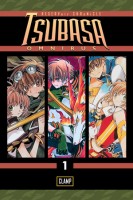
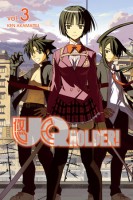

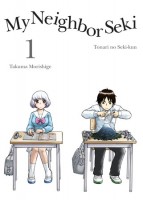

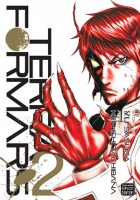
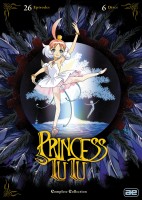 Princess Tutu directed by Junichi Sato. I picked up Princess Tutu more on a whim than anything else when I saw it on super sale. Although I vaguely remembered hearing good things about the anime, I honestly didn’t know much about the series. I’m very glad that I own it because Princess Tutu is marvelous. I do find it somewhat difficult to describe in a way that does the justice, though. The story follows a girl called Duck who really is a duck. She’s under an enchantment that allows her to not only take human form but to also become the magical Princess Tutu. Through the power of her dance she restores the shattered heart of a prince who had sacrificed himself to save others. That all might sound a little strange, and parts of the anime are admittedly weird, but the series is also very good. Stories are just as real as reality in Princess Tutu, and just as potent if not more so. Bits and pieces of classic ballets, operas, and plays can be found throughout the series all mixed together to form a unique work. I absolutely loved the anime’s use of orchestral works not just as background music but as meaningful additions to the story, emphasizing the significance of the characters and of their actions and, for those who are familiar with the pieces, even revealing some of the plot.
Princess Tutu directed by Junichi Sato. I picked up Princess Tutu more on a whim than anything else when I saw it on super sale. Although I vaguely remembered hearing good things about the anime, I honestly didn’t know much about the series. I’m very glad that I own it because Princess Tutu is marvelous. I do find it somewhat difficult to describe in a way that does the justice, though. The story follows a girl called Duck who really is a duck. She’s under an enchantment that allows her to not only take human form but to also become the magical Princess Tutu. Through the power of her dance she restores the shattered heart of a prince who had sacrificed himself to save others. That all might sound a little strange, and parts of the anime are admittedly weird, but the series is also very good. Stories are just as real as reality in Princess Tutu, and just as potent if not more so. Bits and pieces of classic ballets, operas, and plays can be found throughout the series all mixed together to form a unique work. I absolutely loved the anime’s use of orchestral works not just as background music but as meaningful additions to the story, emphasizing the significance of the characters and of their actions and, for those who are familiar with the pieces, even revealing some of the plot.